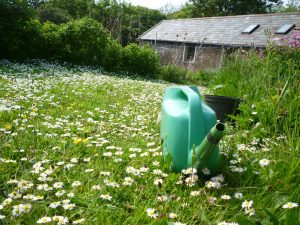COWS
Why do cows have four stomachs
Because they mainly eat grass
Their digestive tracts
Can cope with the facts
That they’ll eat what humans can’t ‘pass’!
And when we corral them inside
And feed them ‘fast food’ from a sack
Maybe it’s time to decide
That they belch and they poo
Much more than they’d do
When they’re grazing and free
To pass pats and pee
With the chance to put manure back!
I thought I’d start this blog with a humorous but heartfelt belief; that we need to start treating our domestic animals with the respect they deserve; with good husbandry and as part of a cohesive, harmonious and, crucially, humane system.
The vast increase in the popularity of a vegan diet should take the pressure off the need to produce so much of our cereal crops to feed animals. Perhaps, then, we would have a chance to return to local supplies of sustainably produced farm produce; a practice that has found much favour during the Covid pandemic.
For me, this is a real ‘forward to the past’ subject. I am not a vegan or a vegetarian, although our diet is almost meatless; but it does include dairy. For nearly twenty years we had the incredible good luck to live in a smallholding, on a windy hill in Carmarthenshire. For most of that time we reared animals; cows, pigs, sheep, chickens. We had our own milk, our own beef, pork and lamb; plentiful eggs and home grown veg; again, mostly organic. We never had any spare cash; but we ‘ate like kings’.
Once a month we went to a local cooperative, where we topped up on bulk purchases of rice, flour, pulses, more veg and fruit. This was a social occasion, where we caught up with friends in far flung areas of the county.
When we needed to kill an animal, we were able to utilize a small well run abattoir; not far away and where all stock were unaware of their fate, before the deed was done. Many of these family concerns were closed in later years; forcing the use of huge conglomerate operations, where animals were often kept in disgusting conditions for overlong periods of time; among the smell and sounds of the previous slaughter. This was one of the main reasons why we gave up producing our own meat; and probably why we ate, mainly, vegetarian.
Now, we read that food poverty is an ever growing concern; although many statistics show that, globally, we waste more food, than is needed to alleviate most of world hunger. I read in the i newspaper last year, that, in this country alone, the area of land required, to grow the equivalent amount of imported veg and fruit, was nigh on equal to the area of land taken up by gardens; domestic and public; and gardening is ever increasing in popularity, partly due to lockdown leisure; and awareness of the benefits to health and well being of growing your own. After the last world war the ‘Dig for Victory’ campaign helped to create a populace that was well balanced, self sufficient and healthy.
EVERYBODY NEEDS . . . 
Everybody needs a garden
It should be the law!
Large or small, a patch of earth
Could teach us all of nature’s worth
No matter rich or poor
Everyone should know the pleasure
When you harvest what you sow
There’s no better satisfaction
Than this basic ancient action.
And, you comprehend a fraction
Of the need to plant and grow
Two years ago, on the BBC World Service, I heard about a native North American Indian, who was raised on a reservation until the state stepped in to ‘re-educate’ him and other compatriots. They were sent to boarding school, where they were fed state donated food; tinned, dried, frozen; lacking vital nutritional needs. Hence, they suffered the usual health problems and deficiencies; obesity, diabetes etc.
When he grew, he trained as a chef in Europe. Returning to the US he began to realize that he had no knowledge of his native Indian cuisine. He returned to the reservation where he managed to discover a few souls who remembered what their diets consisted of in days gone by; much of it fresh caught (fish, fowl and game), corn based carbohydrates and home grown vegetables.
With difficulty and dedication, he drew together the historical strands of his native diet; and has now started a restaurant featuring indigenous food. And he intends for it to be the first of many across North America, where every state has a history of native Indian culture.
I found this story inspiring; and a suitable template for a worldwide movement. If people could eat ‘local’ maybe we could feed the world properly; with better diets, less waste and more awareness of global health.

Brilliant Jackie.
nice words as usual.
Just so Jackie 👍
Nice pic!
I think it’s going to take a multi-pronged approach. There is no magic bullet. Yes, the vegan diet impacts less than other diets and lots of people are eating less meat, although this trend is mainly in the developed world. In the developing world it’s the opposite. Globally, cheap mass produced meat consumption is only increasing.
Moving to more local food production is another part of the solution. I heard of a guy in Leeds (I think) who’d set up a large garden on the top level of the local multi-storey car park and they are supplying the local restaurants with top quality veg. Zero air miles 🙂